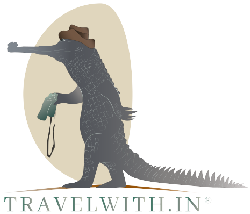Kanha National Park in Madhya Pradesh is one of the oldest national parks in India and the biggest in the State. The Park can be accessed by flying in to Raipur (Chhattisgarh), Nagpur (Maharashtra) or Jabalpur (Madhya Pradesh) airports. From these cities it is a 4-5 hour drive mostly through good roads. The Park is one of the best managed in the Country with stricter rules and regulations that are aimed to prevent safari drivers, guides and tourists from mis-using the facilities and from making the jungle safari experience an unpleasant one for others. Visit and follow our Instagram page to see photos from Kanha and other national parks we cover.
Tigress on the move in Kanha National Park
Some of the recent rules include not speeding the safari vehicle over 25km/hour, stopping at any given point in the Park (other than designated rest areas) can not exceed 20 minutes and exiting the Park beyond the designated time can result in the vehicle, guide and driver being fined and banned from entering the Park for an indefinite period of time.
The best time to visit the Park is, well, that depends on many factors. If you can’t stand the heat then definitely go in the winter – November to March but safari permits MUST be booked at least 3 months before your arrival. Short in supply, they get taken the moment the permits become available for the public.
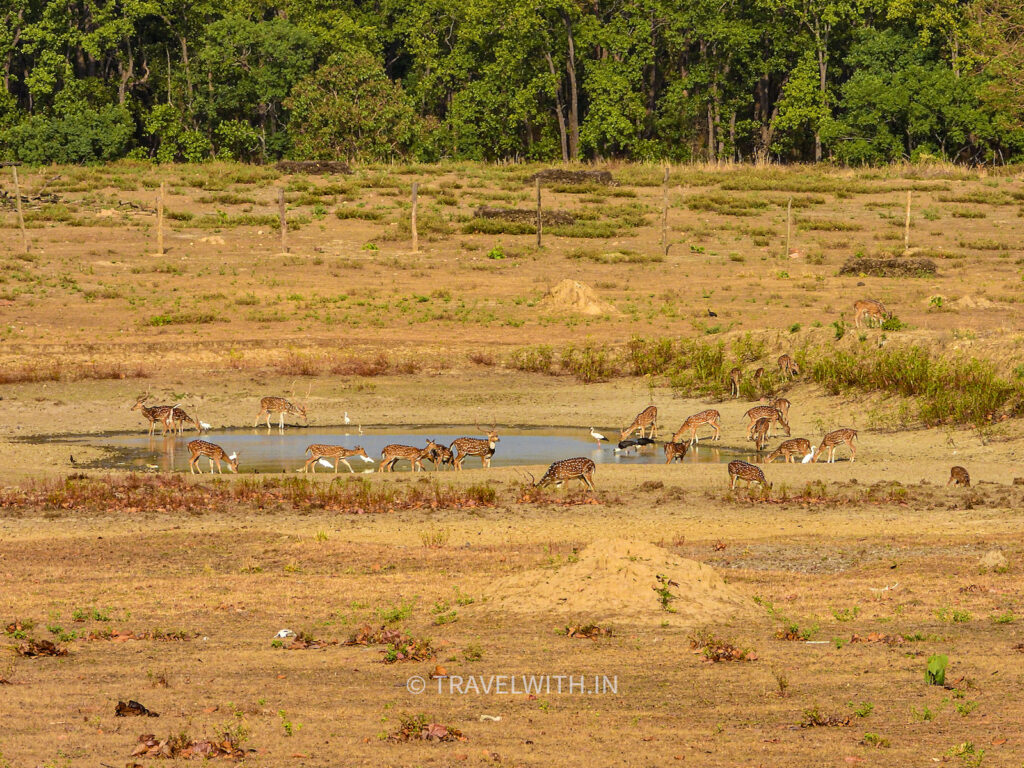
A Crowded Water-hole in Summer
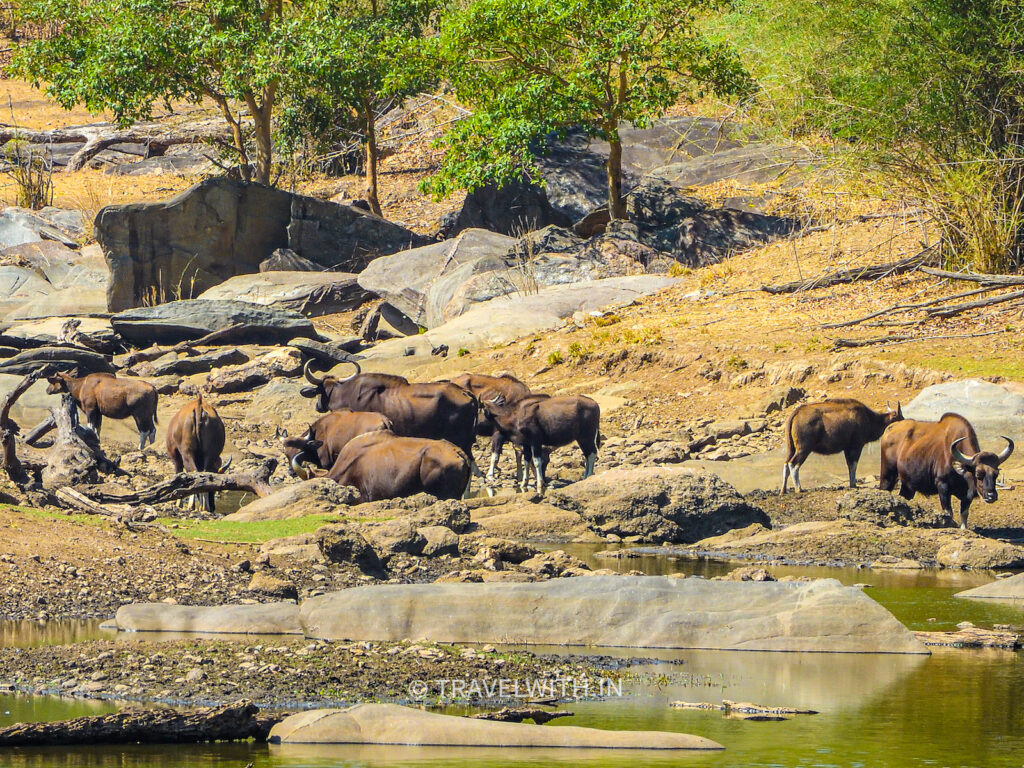
Herd of Indian Bison or Gaur, Kanha
The entire Park transforms in the winter and the evergreen sal forests, lush grasslands along with the morning mist and much wanted sunshine makes it even more enticing.
The summer months – April to June are hot but sightings of animals gets better as the forest loses it’s green cover and water becomes scarce. The Park is closed during the monsoon from June 30 to September 30.

Sambhar deer and Red-Jungle Fowl in Kanha
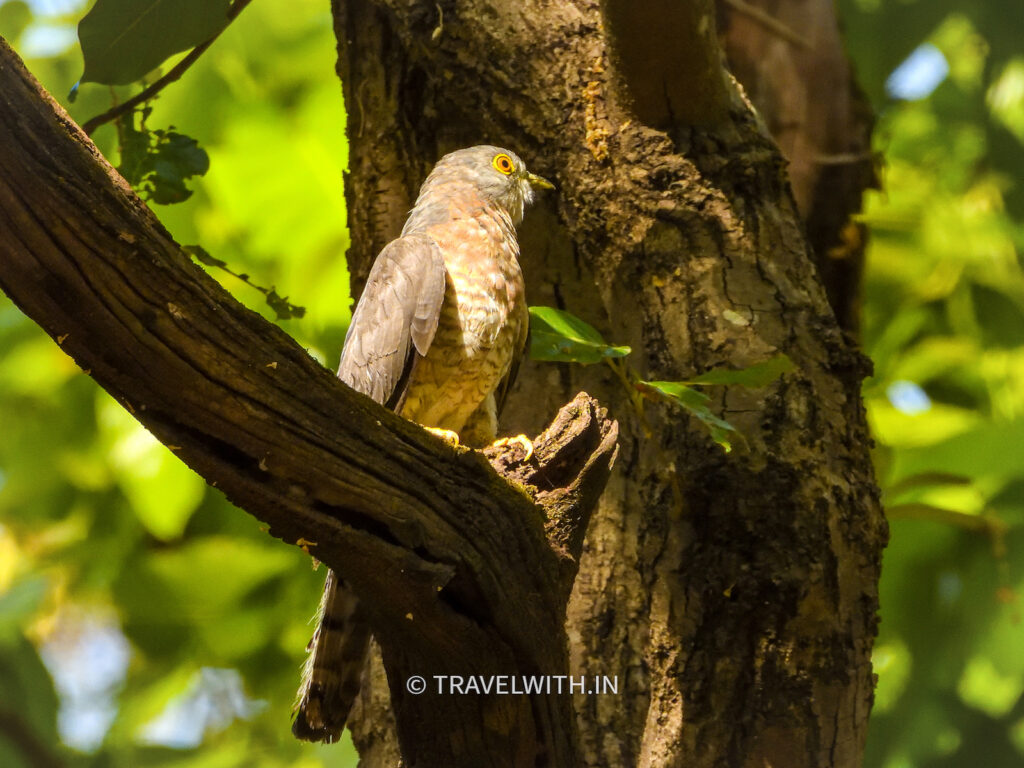
Common Hawk-Cuckoo
Kanha Tiger Reserve also has a very good buffer zone which is known for leopards, sloth bear and other carnivores which seek alternative territories far from the king of the jungle, whose number is grown to a 100+ in the core zones of the Park.
The primary entrances to the Park are from the Mukki and Khatia gate but there is also Sarhi, although this gate is not much used by tourists. The Mukki core zone in recent years has had more luck with tiger sightings hence permits sell out faster than they do if you were booking permits for other zones.
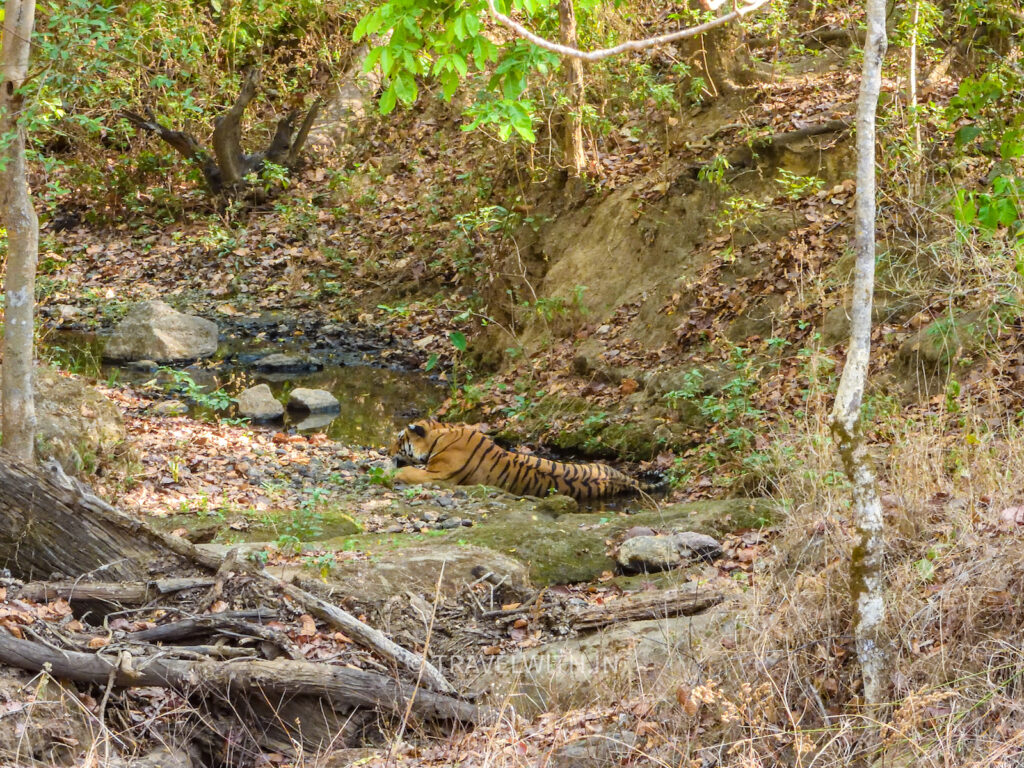
Tiger in it’s Habitat
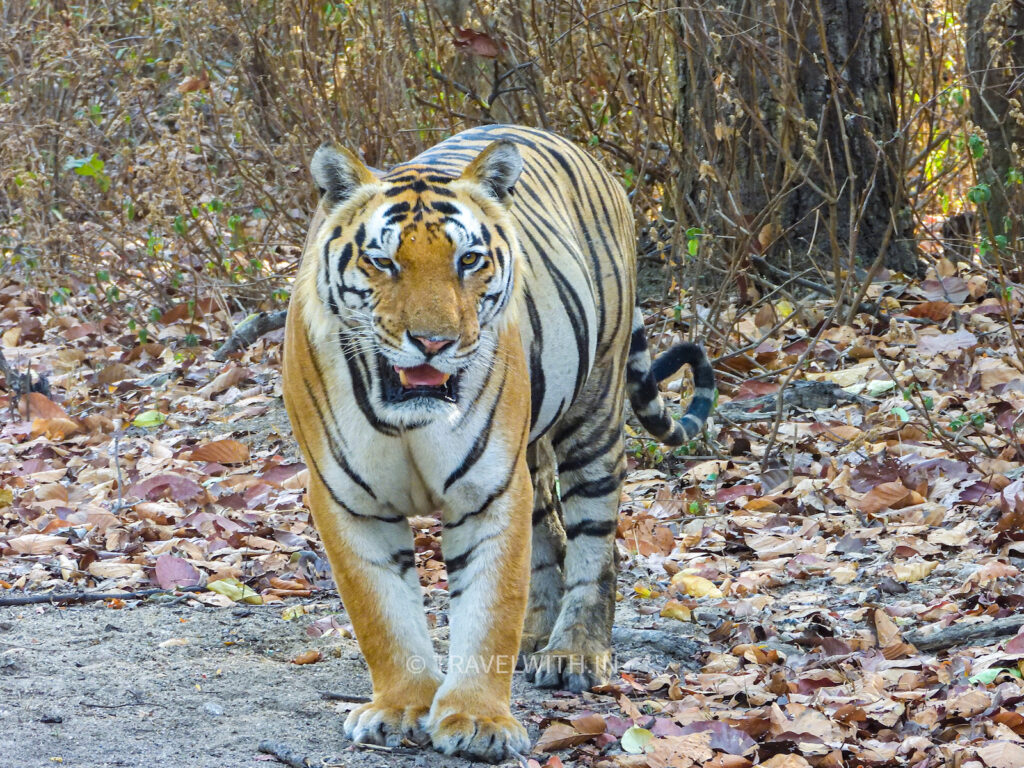
Tiger with a belly full
Through Mukki and Khatia gates one can enter various core and buffer zones of the Park such as Mukki (core), Kanha (core), Khatia (buffer), Khapa (buffer) and Kisli (core). Safaris last longer in the morning and are shorter in the afternoon. Hours depend on time of the year you visit i.e. shorter during the winter and longer hours during the summer.
Besides day safaris, Kanha also offers wildlife enthusiasts an opportunity to visit the buffer zone of the Park at night. Chances of spotting nocturnal animals such as leopards, sloth bears, smaller cats, owls, night jars etc. can be rewarding during this safari.
Tigers of Kanha
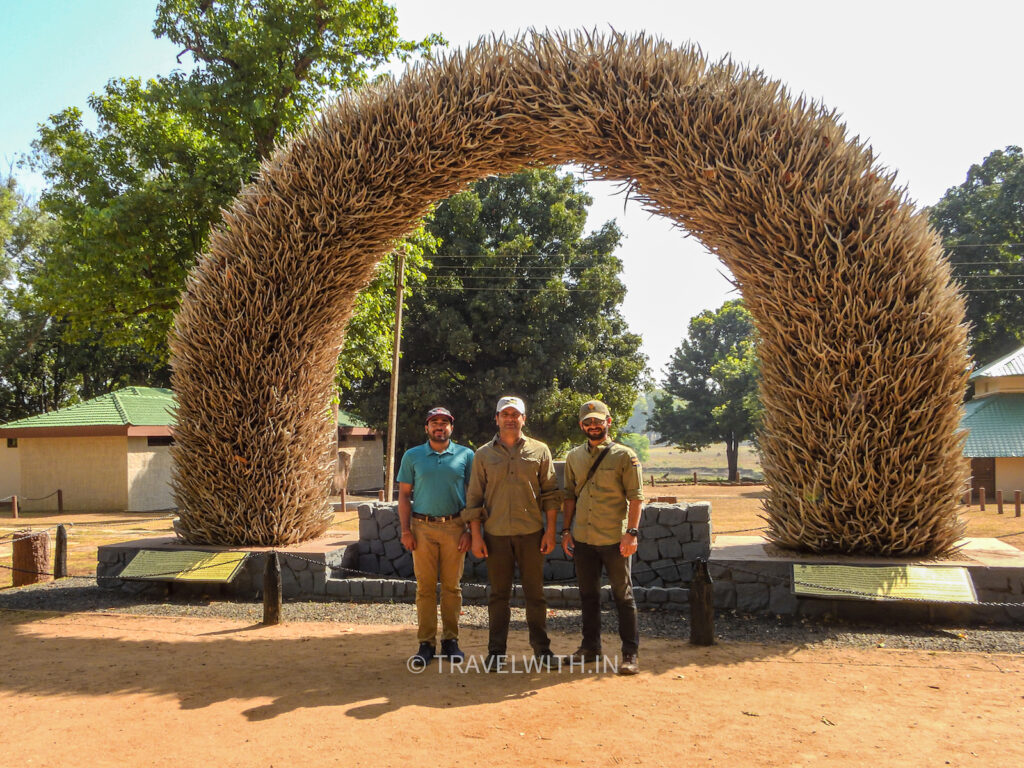
Fallen Deer Antlers in Kanha
There are several hotels and resorts from luxury to budget around the two main gates. They offer full room and boarding, various activities such as nature walks, yoga, star gazing, pottery and tribal lifestyle and dances and can even book your safaris, although at a higher price. If you need me to recommend where to stay, then write me an email or call me (contact information listed below).
Besides the tiger, one can see the endemic hard-hoofed barasingha (swamp deer). The hard-hoofed swamp deer is a subspecies of the swamp deer family one that typically inhabits swamps and marshes in a few other parts of India. Driven to the point of extinction at the turn of the century, today their numbers are up to 800+ in Kanha National Park alone. Such is the success story behind Kanha’s wildlife conservation initiatives that tigers and other animals have been relocated to Panna and Bandhavgarh National Parks.
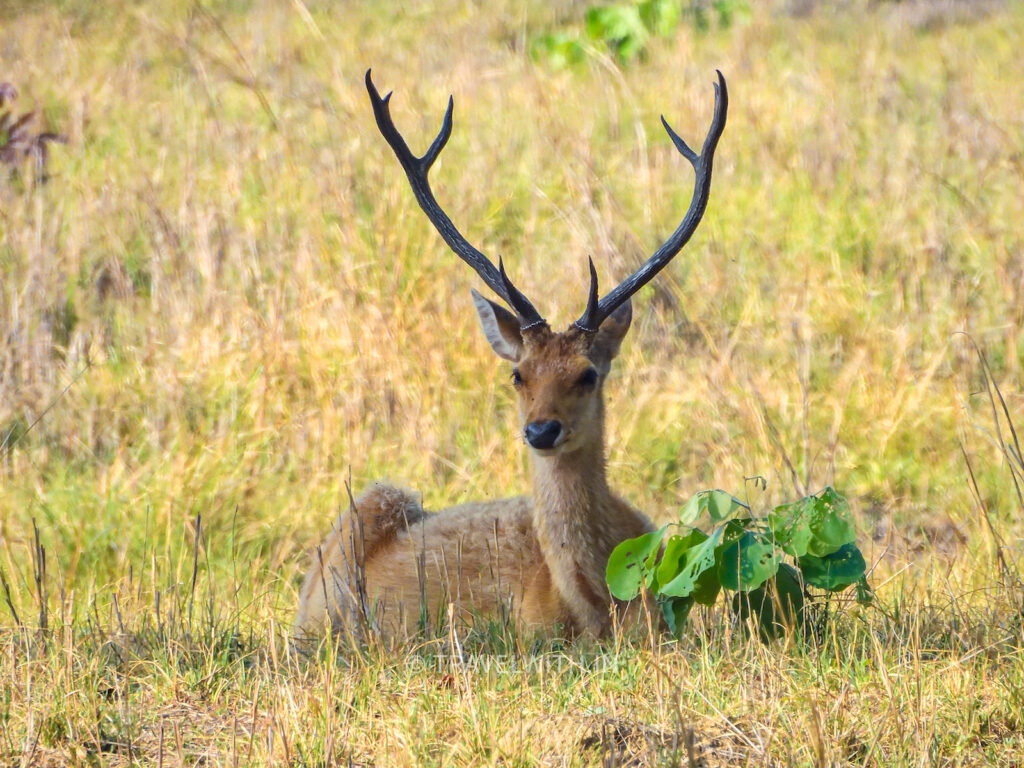
Hard-hoofed Barasingha (Swamp deer)
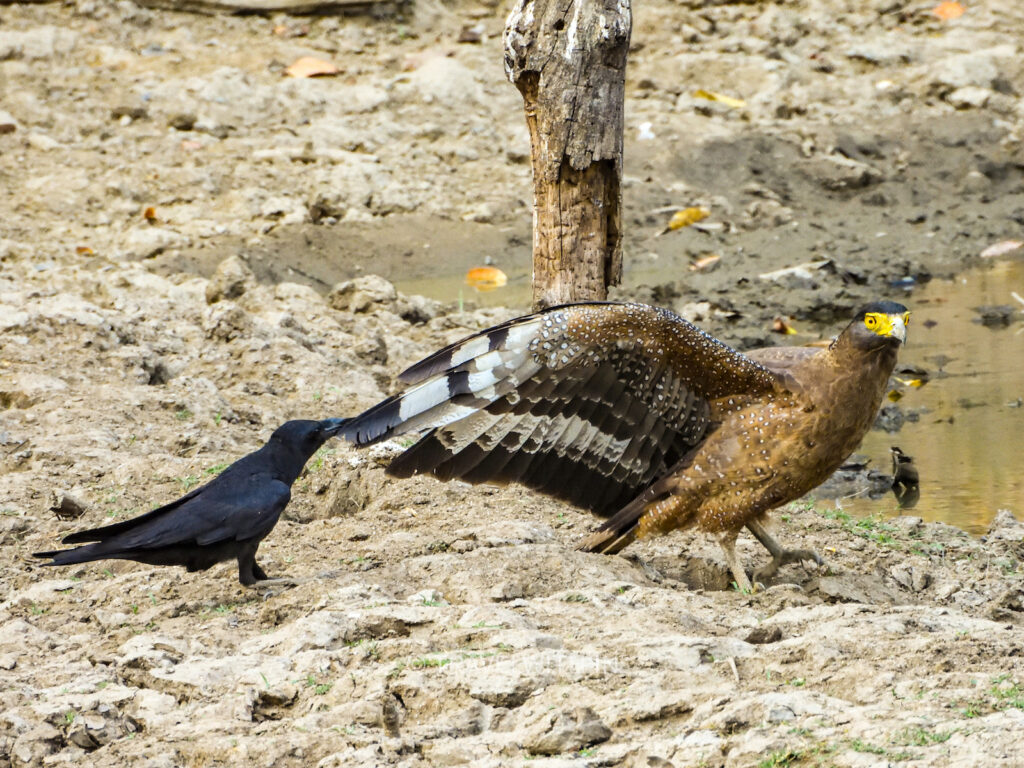
Crested Serpent Eagle harassed by a Jungle Crow near a water hole
Kanha is home to several species of birds too. Surprisingly, most of the guides / naturalists provided by the government that joined me during the safaris knew their birds, carried binoculars and field guides with them for reference. This is brilliant as guides in most other Parks in India focus on big mammals and are at large clueless about birds, even those that are resident! Be sure to let them know if you have a special interest in birdwatching and they would be glad to point them out to you.
Please Note:
• There is no guarantee that you will see the above wildlife. The river and / or sanctuary is their habitat and sightings depend on water level in the river, human interference, climatic conditions, weather and other factors, migratory pattern of birds, most of which are beyond your and my control. I will do my best to show you all there is to see.
• What to carry during the safari: photo identification, camera, binoculars, warm jacket (in the winter), backpack, sun glasses, cap, vizer, sun block, some cash, and drinking water.
• Smoking and drinking alcohol is strictly not permitted in National Parks and Wildlife Sanctuaries.
• Please do not throw trash on the floor even if you don’t see a trash can. Please ask me and I help to dispose it off properly.
• To prevent any disturbance to wildlife, we do not encourage the use of any call playback to attract birds, feeding or baiting of wildlife.
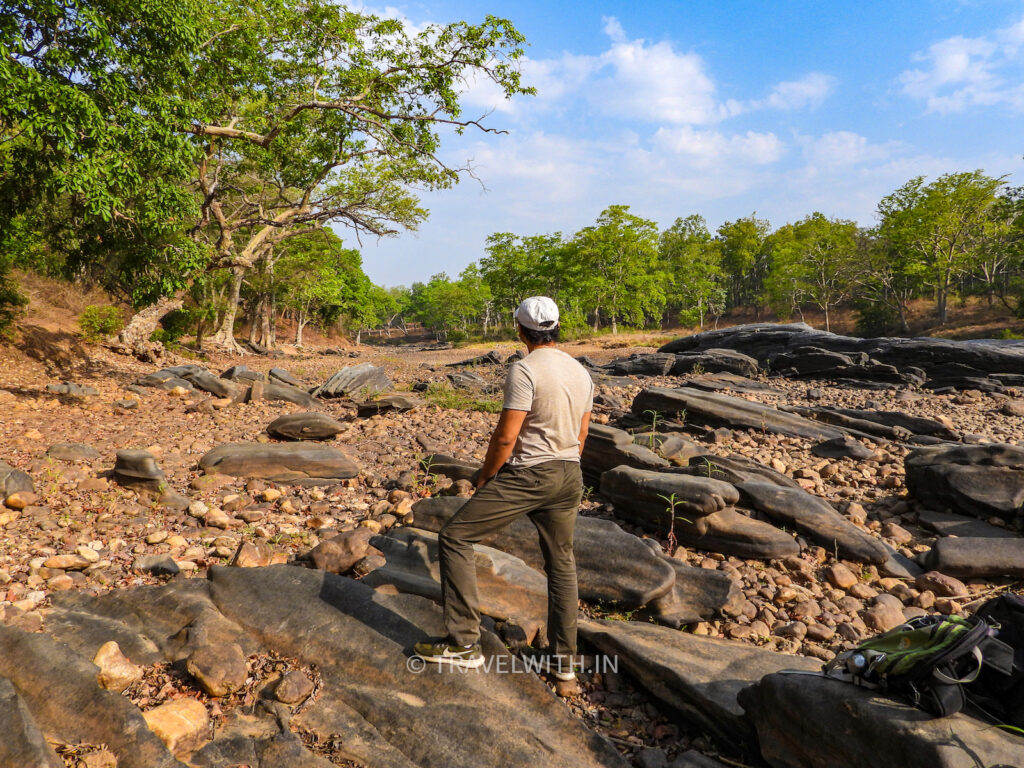
Walking safari in Kanha
